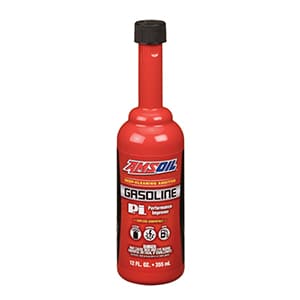AMSOIL P.i. is the best fuel treatment for cars because it effectively removes the stubborn deposits that sap power from the engine’s valves, injectors, and combustion chambers. The power of your car might be increased by as much as 14% after having P.i. clean the complete fuel system. In order to facilitate simple application, the P.i. bottle is entirely compatible with the capless gasoline systems seen in current automobiles.

P.i. Offers Superior Deposit Cleaning
The highly effective additives in AMSOIL P.i. target the most prevalent types of engine contaminants and reduce their impact.
P.i. Cleans Carbon Buildup From Fuel Injectors
The majority of today’s motors make use of gasoline direct injection (GDI,) which helps increase power while also reducing fuel consumption. Because they are situated inside the very high-temperature and high-pressure environment of the combustion chamber, these injectors are especially susceptible to the formation of contaminants. Soot (particulate matter) levels may grow substantially due to extreme pressure mixed with inefficient fuel combustion. In most cases, direct injection generates thirty to forty times the amount of soot than port fuel injectors (PFI) do. Injector fouling, even at low levels, reduces efficiency and increases emissions, wear, and power consumption.

The deposits on the injectors are to blame for the troublesome starting and idling. Exhaust emissions will rise as a result of these undesired deposits. Fuel economy and output will both suffer as a result of injector contamination.
Injectors may be kept in good working order and free of lingering deposits with periodic P.i.
P.i. Battles Deposits on Intake Valves
Airflow patterns in the cylinder might be impacted by valve deposits. They temporarily absorb and then release gasoline, which throws off the proportion of air to fuel that should be balanced. Because the deposits may get in the way of the valve stem and guide, they can also cause valves to get stuck.
The accumulation of deposits on the intake valves poses a risk of valve failure. Unwanted exhaust emissions will rise due to the presence of these harmful substances. Deposits on the intake valves will, in the long run, make the engine less efficient and result in a loss of power.
Deposits within the combustion chamber boost compression while also absorbing heat. In a later stage, during the intake cycle, they will release that heat. Piston “carbon rap” occurs when deposits in an engine force the piston to strike the cylinder head.

It is also possible for the deposits to flake off and get lodged between the valves and the valve seat, which will result in a loss of compression. When gasoline spontaneously combusts before the ignition spark, a phenomenon known as “knock” may occur, especially in engines with high compression and a large amount of stored heat. This may harm the engine and lead to higher emissions.
The majority of modern automobiles are equipped with sensors that can modify the timing of the spark. Even if the auditory “knock” is suppressed, the engine’s power output and efficiency both suffer as a result of the delayed timing. Fuels with a higher octane rating may be utilized to mitigate the effects of the phenomena. Fuel with a higher octane rating and a higher price tag are required to maintain the same level of performance in an older automobile.
The likelihood of “pinging” or “knock” occurring before ignition is boosted by deposits in the combustion chamber. These deposits may cause the engine to idle roughly, experience a loss of compression, and be difficult to start. “Carbon rap” may also be caused by undesired deposits inside the combustion chamber.

With P.i., you won’t have to use higher-octane fuels as much, and you’ll get more power back, less knock, and better gas mileage.
Our intention with this post, which we labeled Best Fuel Rreatment for Cars, was to provide an alternative point of view, namely that purchasing a high performance gas additive treatment, such as AMSOIL’s P.i., would result in the delivery of measurable advantages to the consumer.
